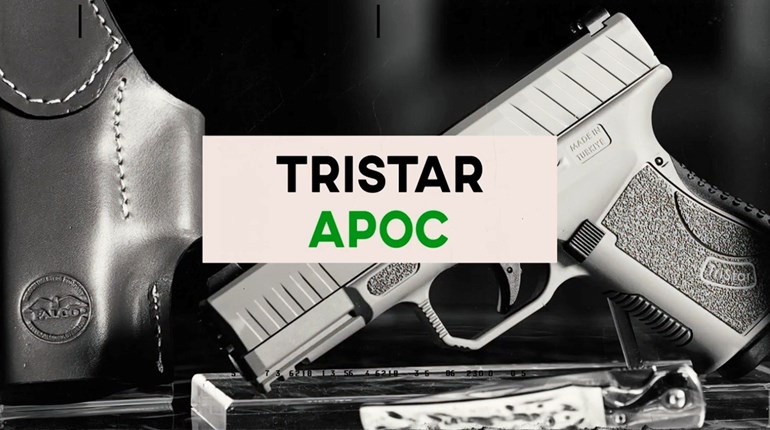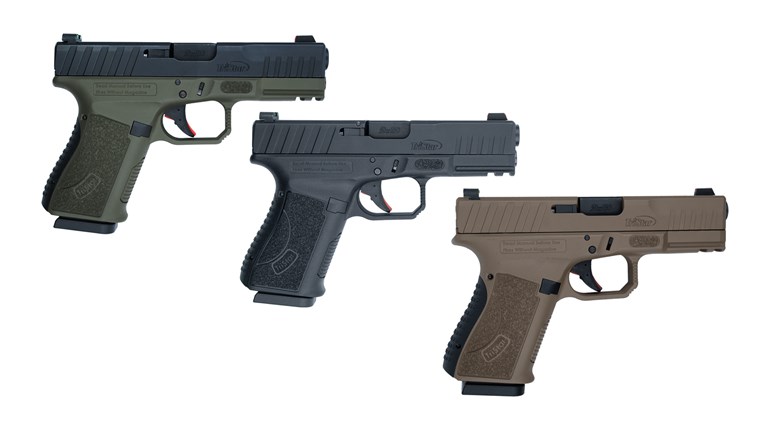I learned the importance of saving money at an early age. My Scots-Irish grandfather tore down abandoned barracks at Nebraska’s Sioux Army Depot in the 1970s and used the reclaimed lumber and hardware to build a three-story lake house. My siblings and I spent many a summer day sitting next to a short section of train rail, pounding crooked nails straight. It’s safe to say I come by my frugal nature honestly, which is why I can sniff out a bargain from miles away.
My latest good deal comes in the form of a semi-automatic shotgun of Turkish manufacture. Despite the many naysayers, I’ve long been a fan of shotguns from Turkey and have carried one waterfowling for the past decade. So I wasn’t surprised when the second-generation Viper semi-auto from TriStar performed to my lofty expectations.Out of the box, the Viper G2 was as stiff as any new gun I’ve ever encountered, but I can’t say I wasn’t warned. Stuck right to the inside of the lid was a large, bright sticker warning: “NOTICE: Your shotgun may require a ‘break in’ period. Please shoot heavy loads for the first 20 rounds. Thereafter, light load shells will work with greater ease.”
This being a test, I wanted to see if I could stick the gun and initially shot it with a mix of light, 2¾-inch loads from Kent, Winchester and Estate. Fully expecting it to jam, I’ll admit to flinching during that very first volley. Not only did the Viper G2 cycle the first three rounds, but it continued to spit empties without fail through the entire first box and beyond. Only after being fully satisfied there would be no problems with target loads did I move on to 3-inch, high-brass magnum loads, including what I consider the stoutest on the market, Remington’s HyperSonic Steel at 1700 fps. All fired flawlessly. The gun came from the factory bone-dry, and the drop or two of lubricant I added after the first test shots slicked things up considerably and eliminated some of the action’s clunkiness.
Considering the gun carries a suggested price in the low $400 range, the Viper G2 would be a steal even if it looked and handled like a warped 2-by-4. Lucky for us cheapskates, the bargain continues in those two departments as well. While the gun’s appearance isn’t going to win any design awards, neither can it be considered ugly. Similar to a battle-tested broadsword, it has a sort of brutish elegance, with a matte-black finish on the barrel and serviceable checkering on the stock and fore-end. The black thermoplastic stock’s Soft Touch finish lends a rubberized feel to the exterior, aiding grip. The aluminum receiver features TriStar’s only attempt at anything considered stylish: Matching, swooping lines machined into either side arc over a bright TriStar logo transfer that I expect to last no longer than a single hunting season. Note the receiver is not drilled and tapped, but puzzlingly, is milled with a dovetail to accept tip-off scope mounts.
Like that broadsword, the Viper G2 also handles fairly well. Listed at 6.8 pounds in the company’s catalog, my 12-gauge sample, unloaded, weighed just a hair over 7 pounds on a digital scale. Due to what I consider the overbuilt nature of the gas operating system, I expected the Viper G2 to be front-heavy. Instead, with the 26-inch barrel, the balance point lies nearly exactly where the barrel and receiver meet.
How a gun feels is a pretty subjective matter, but I will say the Viper G2 handled nicely on the range, coming to the shoulder naturally from a low start and swinging easily. I’m probably considered average size—6-foot-even and just a bit more than 200 pounds—but I have a longer neck and arms, which sometimes creates an issue with shotgun fit. The Viper’s 14¼-inch length of pull was a little short for me but not so much that it caused any problems. On the flip side, the stock’s drop was nearly perfect, and throughout testing I never failed to get a good cheek weld with the front fiber-optic bead sitting perfectly atop and in line with the vent rib in my sight picture.
Shooting the shotgun was just as comfortable, owing to the standard gas-piston operating system. Two checks within the barrel-mounted gas cylinder (which measures an ungainly 2 inches long) channel gases from the shell’s burning powder back into a piston, which then engages a spring and dual action bars to drive the bolt rearward. A lot of recoil is tamed by those gases bleeding off. The Viper’s weight helps, too. Only the Remington HyperSonic loads delivered any kind of real snap to the shoulder, though not enough to be overwhelming or uncomfortable for the average-framed shooter.
Any chinks in the Viper’s armor are few and far between. Fit and finish are adequate, with minimal gaps between parts. The fore-end has recessed tabs that fit into the receiver, and it may take some jostling during assembly to get the parts to come together evenly. Sliding the barrel into the receiver also requires a bit of care, as the bolt needs to be held about halfway back for the barrel to slide, with some force, completely into place; not a big deal, but worth noting. In addition, the plug floats freely into and, more problematically, out of the magazine. Several times when taking apart the gun I found myself chasing the thin plastic rod across my gun room.
Part of that Scots-Irish nature I inherited usually prevents me from giving anything a glowing review, but I admit being hard-pressed to say anything else negative about the TriStar Viper G2 shotgun. It’s reliable, serviceable and comfortable to shoot. Oh, and did I mention the company backs all its firearms with a five-year warranty? Considering the cost, about the only downside to buying a Viper G2 is that it eliminates any reason to own any other shotgun.
Technical Specifications:
Gauge/Chamber: 1 2/3" (tested), 20/3"
Capacity: 5+1 rounds
Barrel: 26" (tested), 28"; chrome-lined chamber and bore, ventilated rib, threaded for choke tubes
Trigger: single-stage, mechanical; 4.9 lbs. pull weight
Sights: front fiber-optic bead; dovetail milled in receiver for tip-off rings
Safety: cross-bolt
Stock: black thermoplastic; Soft Touch finish; LOP 14 1/4"; drop at heel 2 1/2"; drop at comb 1 1/2"
Metal Finish: matte black
Overall Length: 46.5"
Weight: 6.8 lbs.
Accessories: 3 Beretta Mobil choke tubes (IC, M, F)
MSRP: $519





































